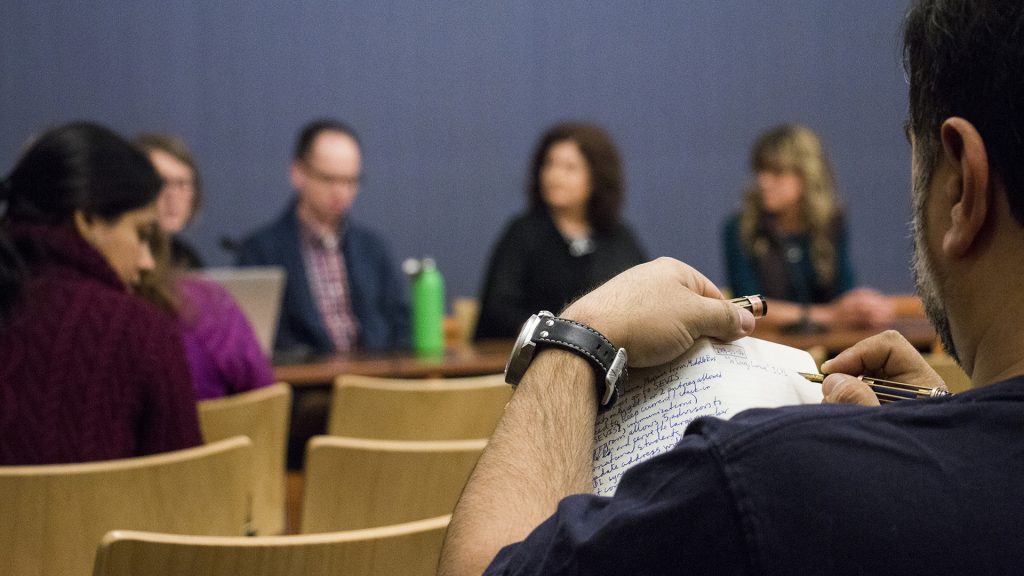The poem “Hey Cursive,” by Lisa Roberts, is not only an ode to cursive but also a eulogy. This is the poem that opened “So Long, Cursive,” a discussion held by the Obermann Center for Advanced Studies at the Iowa City Public Library on Tuesday.
The event included questions from the audience and a panel that discussed the evolution of teaching handwriting in schools.
Shawn Datchuk, a University of Iowa associate professor of special education, talked about the current practices requiring print education in schools and how the lack of handwriting education affects students.
“Most schools provide little to no handwriting instruction in general, even outside of cursive,” Datchuk said. “The best evidence we have, from some national surveys, especially elementary-age students, only get about 10 to 15 minutes of writing instruction per day. That only leaves so much time for handwriting, so unfortunately, most schools just don’t do it.”
Most schools also have to align their curriculum with common core or other academic standards, he noted. Many say better handwriting education helps young students learn to read better, Datchuk said.
RELATED: Education goes standing-room only
“Our best guess is that because students are actively encoding letters, that it also helps them decode words,” he said. “Because we’re not doing that, we’re leaving a huge building block off.”
Datchuk said that according to teacher surveys, most assignments children turn in are done with pen and paper. So even though it’s commonly used, he said, it’s rare that schools invest in handwriting.
In many of today’s technologically centered schools, students will spend more time learning how to type than how to write. Poet and Iowa Youth Writing Project instructor Lisa Roberts said she believes teaching handwriting is a matter of social justice, and a lack thereof will only expand the socioeconomic divide.
RELATED: Technology & the classroom
“Many children in our country still do not have access to computers and to the Internet,” Roberts said in an email to The Daily Iowan. “Rural families, economically struggling families. While it should be our goal to provide all children with these resources, if we do not, and at the same time phase out handwriting as a skill and practice, then we are leaving them without a comfortable means of skillful written communication.”
Cheryl Jacobsen, a calligrapher and handwriting historian, said she teaches students how to write not to improve their everyday handwriting but more as a form of art. She believes cursive can have benefits for students who spend time on it.
“I think the whole idea of cursive is getting into the rhythms and patterns of writing and getting it ingrained in your body,” she said. “And you can’t get that without a lot of practice.”
However, Jacobsen said, she wasn’t sure it was practical in today’s world, in which the number of subjects that must be fit into a day is already too many.
“When people used to teach people handwriting in school, they would spend a whole period on it, and they would practice it,” Jacobsen said. “People hated it or loved it, but they spent a lot of time on it. And I just don’t see how that’s practical.”



